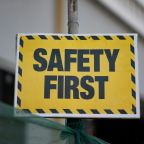
The Future of Safety in Fluorination and Chemical Distribution - Trends and Predictions
The world of fluorination and chemical distribution is on the brink of transformative changes in terms of safety. As industries evolve, so do the methods and technologies used to ensure the protection of workers, the environment, and communities.
To shine a light on this fascinating subject, we’ll be setting our sights on the future of safety within these sectors, exploring the trends and predictions to redefine the landscape.
Automation and Robotics
One of the most significant trends on the horizon is the increased use of automation and robotics in chemical handling and distribution. Automated systems can reduce the risk of human error and exposure to hazardous chemicals, which ca help to improve safety in the workplace.
Enhanced Regulatory Compliance
As safety regulations evolve, companies will need to stay ahead of the curve to ensure compliance. Of course, renowned chemical distributors like Apollo Scientific already make compliance their watchword. But as stringent safety standards and reporting requirements continue to be enforced, all companies in the industry will be pushed to invest in safety measures and training.
Predictive Analytics and AI
Predictive analytics powered by artificial intelligence (AI) can forecast potential safety issues based on historical data and current conditions. For instance, AI algorithms can predict equipment failures, chemical reactions, or even worker fatigue, allowing companies to take proactive measures to prevent accidents.
Sustainable Chemistry and Green Practices
Safety isn't just about protecting against accidents; it's also about safeguarding the environment. The future of chemical distribution will witness a greater emphasis on sustainable chemistry and eco-friendly practices. Companies will prioritise green manufacturing, reducing or eliminating the use of hazardous chemicals, and adopting safer alternatives.
Virtual Reality (VR) and Augmented Reality (AR)
Training and simulations using VR and AR are becoming more prevalent in safety programs. Workers can immerse themselves in realistic scenarios, practising emergency responses, equipment operation, and chemical handling in a safe, controlled environment. This technology not only enhances safety but also improves learning outcomes.
Smart Sensors and IoT Integration
The Internet of Things (IoT) is making its mark on safety in the chemical industry. Smart sensors can continuously monitor environmental conditions, such as temperature, humidity, and gas levels, and transmit real-time data to control centres. If a hazardous situation arises, rapid responses can be initiated, preventing disasters before they escalate.
Remote Monitoring and Management
Remote technologies will enable companies to monitor and manage chemical distribution processes from anywhere in the world. This capability is particularly valuable for overseeing safety protocols and responding to emergencies in real-time, regardless of physical location.
Community Engagement and Transparency
Companies will increasingly engage with local communities and stakeholders to build trust and transparency. Open communication about safety measures, emergency response plans, and environmental impact will be essential in maintaining a social license to operate.
Customised Safety Solutions
One size doesn't fit all when it comes to safety. The future will see the development of customised safety solutions tailored to specific chemical handling processes and risks. These solutions will account for unique challenges and variables in each operation.
The future of safety in fluorination and chemical distribution seems bright and promising. Technological advancements, automation, and a commitment to sustainability will drive industry-wide improvements.
As safety becomes increasingly integrated into every aspect of these sectors, the protection of workers, the environment, and communities will remain paramount. The future is about creating a safer, more sustainable world through innovation and responsible practices.











